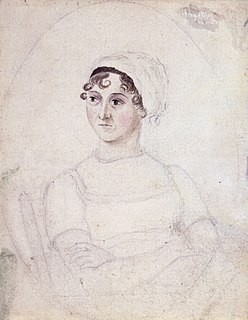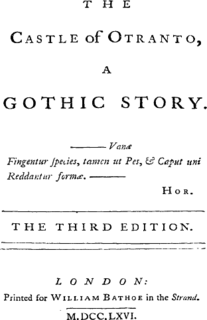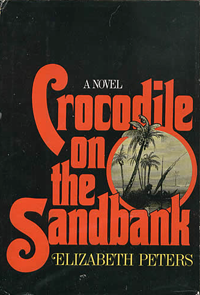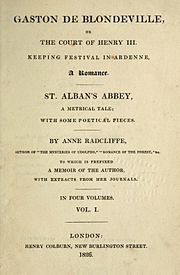
An autobiography is a self-written account of one's life. The word "autobiography" was first used deprecatingly by William Taylor in 1797 in the English periodical The Monthly Review, when he suggested the word as a hybrid, but condemned it as "pedantic". However, its next recorded use was in its present sense, by Robert Southey in 1809. Despite only being named early in the nineteenth century, first-person autobiographical writing originates in antiquity. Roy Pascal differentiates autobiography from the periodic self-reflective mode of journal or diary writing by noting that "[autobiography] is a review of a life from a particular moment in time, while the diary, however reflective it may be, moves through a series of moments in time". Autobiography thus takes stock of the autobiographer's life from the moment of composition. While biographers generally rely on a wide variety of documents and viewpoints, autobiography may be based entirely on the writer's memory. The memoir form is closely associated with autobiography but it tends, as Pascal claims, to focus less on the self and more on others during the autobiographer's review of their own life.

Mary Ann Evans, known by her pen name George Eliot, was an English novelist, poet, journalist, translator and one of the leading writers of the Victorian era. She wrote seven novels: Adam Bede (1859), The Mill on the Floss (1860), Silas Marner (1861), Romola (1862–63), Felix Holt, the Radical (1866), Middlemarch (1871–72) and Daniel Deronda (1876). Like Charles Dickens and Thomas Hardy, she emerged from provincial England; most of her works are set there. Her works are known for their realism, psychological insight, sense of place and detailed depiction of the countryside.

Jane Austen was an English novelist known primarily for her six major novels, which interpret, critique, and comment upon the British landed gentry at the end of the 18th century. Austen's plots often explore the dependence of women on marriage in the pursuit of favourable social standing and economic security. Her works critique the novels of sensibility of the second half of the 18th century and are part of the transition to 19th-century literary realism. Her use of biting irony, along with her realism and social commentary, have earned her acclaim among critics and scholars.

Elizabeth of York was Queen of England from her marriage to King Henry VII on 18 January 1486 until her death in 1503. Elizabeth married Henry after his victory at the Battle of Bosworth Field, which marked the end of the Wars of the Roses. They had seven children together.

Ann Radcliffe was an English novelist and a pioneer of Gothic fiction. Her technique of explaining apparently supernatural elements in her novels has been credited with gaining Gothic fiction respectability in the 1790s. Radcliffe was the most popular writer of her day and almost universally admired; contemporary critics called her the mighty enchantress and the Shakespeare of romance-writers, and her popularity continued through the 19th century. Interest has revived in the early 21st century, with the publication of three biographies.

Alexandre Dumas, also known as Alexandre Dumas père, was a French writer. His works have been translated into many languages and he is one of the most widely read French authors. Many of his historical novels of high adventure were originally published as serials, including The Count of Monte Cristo, The Three Musketeers, Twenty Years After and The Vicomte of Bragelonne: Ten Years Later. His novels have been adapted since the early twentieth century into nearly 200 films.

The Monk: A Romance is a Gothic novel by Matthew Gregory Lewis, published in 1796. A quickly written book from early in Lewis's career, it was published before he turned twenty. It is a prime example of the male Gothic that specialises in the aspect of horror. Its convoluted and scandalous plot has made it one of the most important Gothic novels of its time, often imitated and adapted for the stage and the screen.

The Castle of Otranto is a novel by Horace Walpole. First published in 1764, it is generally regarded as the first gothic novel. In the second edition, Walpole applied the word 'Gothic' to the novel in the subtitle – A Gothic Story. Set in a haunted castle, the novel merged medievalism and terror in a style that has endured ever since. The aesthetic of the book has shaped modern-day gothic books, films, art, music, and the goth subculture.

The Italian, or the Confessional of the Black Penitents (1796) is a Gothic novel written by the English author Ann Radcliffe. It is the last book Radcliffe published during her lifetime. The Italian has a dark, mysterious, and somber tone which fixates on the themes of love, devotion, and persecution during the time period of Holy Inquisition. The novel deals with issues prevalent at the time of the French Revolution, such as religion, aristocracy, and nationality. Radcliffe's renowned use of veiled imagery is considered to have reached its height of sophistication and complexity in The Italian; concealment and disguise are central motifs of the novel. In line with late 18th-century sensibility and its parallel fetishisation of the sublime and the sentimentally pastoral, the heightened emotional states of Radcliffe's characters are often reflected through the pathetic fallacy. The novel is noted for its extremely effective antagonist, Father Schedoni, who influenced the Byronic characters of Victorian literature.
Henry Colburn was a British publisher.

Ranulf de Blondeville, 6th Earl of Chester and 1st Earl of Lincoln (1170–1232), known in some references as the 4th Earl of Chester, was one of the "old school" of Anglo-Norman barons whose loyalty to the Angevin dynasty was consistent but contingent on the receipt of lucrative favours. He has been described as "almost the last relic of the great feudal aristocracy of the Conquest".

The Daughter of Time is a 1951 detective novel by Josephine Tey, concerning a modern police officer's investigation into the alleged crimes of King Richard III of England. It was the last book Tey published in her lifetime, shortly before her death. In 1990 it was voted number one in The Top 100 Crime Novels of All Time list compiled by the British Crime Writers' Association. In 1995 it was voted number four in The Top 100 Mystery Novels of All Time list compiled by the Mystery Writers of America.

Margaret of Valois was a French princess of the Valois dynasty who became Queen of Navarre by marriage to Henry III of Navarre, then also Queen of France at her husband's 1589 accession to the latter throne as Henry IV.

The Amelia Peabody series is a series of twenty historical mystery novels and one non-fiction companion volume written by Egyptologist Barbara Mertz (1927–2013) under the pen name Elizabeth Peters. The series is centered on the adventures of the unconventional female Egyptologist Amelia Peabody Emerson, for whom the series is named, and an ever-increasing number of family, friends, allies, and characters both fictional and based on historical figures. The novels blend mystery and romance with a wryly comic tone, and at times also parody Victorian-era adventure novels such as those written by H. Rider Haggard. The series was published between 1975 and 2010, with the final, posthumous novel appearing in 2017.

Amelia is a sentimental novel written by Henry Fielding and published in December 1751. It was the fourth and final novel written by Fielding, and it was printed in only one edition while the author was alive, although 5,000 copies were published of the first edition. Amelia follows the life of Amelia and Captain William Booth after they are married. It contains many allusions to classical literature and focuses on the theme of marriage and feminine intelligence, but Fielding's stance on gender issues cannot be determined because of the lack of authorial commentary discussing the matter. Although the novel received praise from many writers and critics, it received more criticism from Fielding's competition, possibly resulting from the "paper war" in which the author was involved.
Nationality words link to articles with information on the nation's poetry or literature.
Alison Weir is a British author and public historian. She primarily writes about the history of English royal women and families, in the form of biographies that explore their historical setting. She has also written numerous works of historical fiction.
Anne Moncure Crane (Seemüller) was an American novelist, who wrote books such as Emily Chester,Opportunity and Reginald Archer., which were about female sexual desires. Her novels were considered controversial in some quarters of post-Civil War American society. The author Henry James was influenced by Crane's books. She was an important writer in early American realism.

The Female Quixote; or, The Adventures of Arabella is a novel written by Charlotte Lennox imitating and parodying the ideas of Miguel de Cervantes' Don Quixote. Published in 1752, two years after she wrote her first novel, The Life of Harriot Stuart, it was her best-known and most-celebrated work. It was approved by both Henry Fielding and Samuel Richardson, applauded by Samuel Johnson, and used as a model by Jane Austen for Northanger Abbey. It has been called a burlesque, "satirical harlequinade", and a depiction of the real power of females. While some dismissed Arabella as a coquette who simply used romance as a tool, Scott Paul Gordon said that she "exercises immense power without any consciousness of doing so". Norma Clarke has ranked it with Clarissa, Tom Jones and Roderick Random as one of the "defining texts in the development of the novel in the eighteenth century".
Mary Ann Radcliffe was an important British figure in the early feminist movement.















